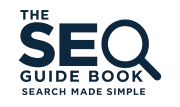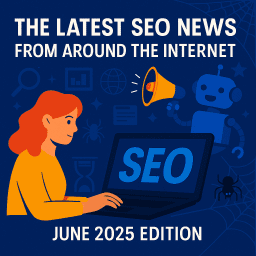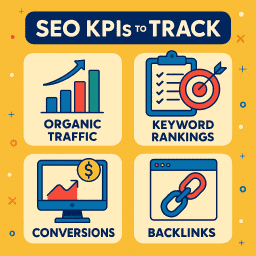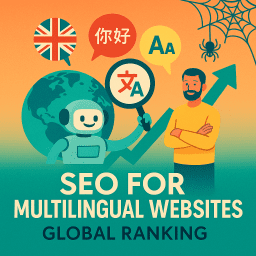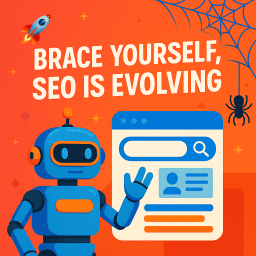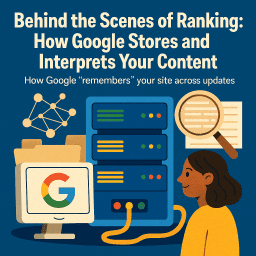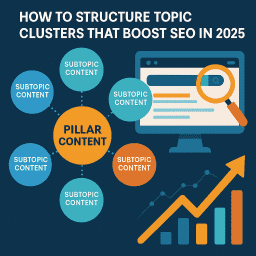B2B SEO in 2025: Proven Strategies That Drive Leads and Rankings
A complete guide for lead-focused, trust-driven SEO
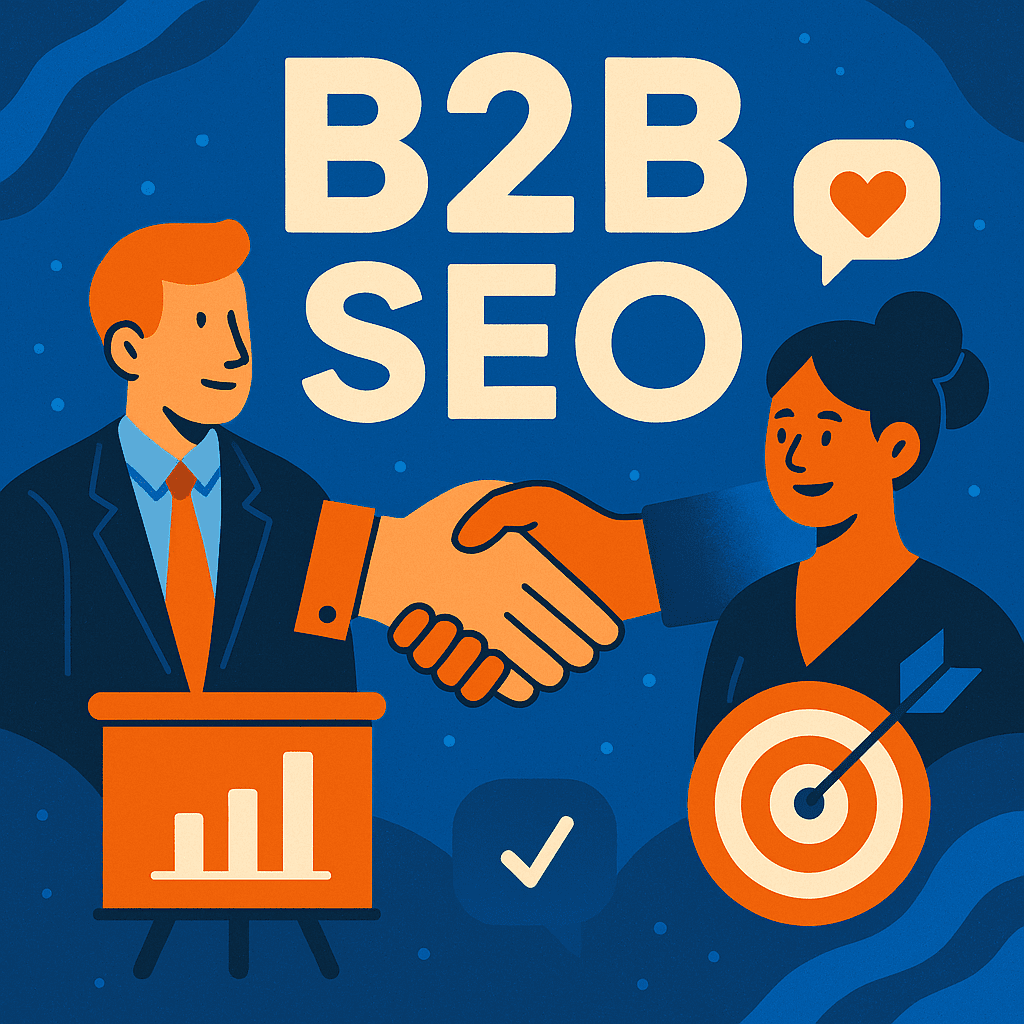
⚡ Crack the B2B SEO Code: Win Leads, Not Just Clicks
📈 B2B SEO isn’t just about traffic—it’s about trust, leads, and long-term relationships. In 2025, search engines have grown even more adept at understanding user intent, business context, and the value behind a webpage. And for B2B websites, where buying decisions are longer and more complex, SEO strategy must evolve accordingly.
This guide explores what works for B2B SEO in 2025, what’s changed, and how to align your website with how real businesses search, compare, and choose their partners online.
💼 What Makes B2B SEO Different?
- Have longer sales cycles
- Target multiple decision-makers (not just one consumer)
- Require more detailed, trust-building content
- Prioritise leads over direct sales
That means your SEO needs to do more than rank—you need to educate, persuade, and nurture.
🔍 Keyword Strategy for B2B SEO
In 2025, keyword research for B2B must go beyond basic tools. Instead, it’s about understanding the intent and role of the searcher. Is it a procurement officer looking for vendors? A CTO researching software integration?
Types of keywords to target:
- Informational queries – e.g., “How to choose a logistics software”
- Solution-aware queries – e.g., “best CRM for manufacturing”
- Branded comparisons – e.g., “HubSpot vs Salesforce for B2B”
- Bottom-of-funnel intent – e.g., “enterprise IT consulting firm UK”
Use tools like Semrush, Ahrefs, and SparkToro to identify questions your audience is asking. Then group them by stage of the buyer’s journey to inform your content structure.
📄 Content That Converts: Not Just Blogs
B2B content in 2025 should be designed to build authority and address friction. That means going beyond generic blog posts.
Core B2B SEO content types:
- Industry-specific landing pages (e.g., “IT Support for Legal Firms”)
- Use case or solution pages
- Case studies with measurable results
- In-depth guides and whitepapers for gated lead generation
- Comparison pages (“Your Brand vs Competitor”)
- Thought leadership articles authored by real employees
Each of these should have a clear SEO angle—targeting specific terms while demonstrating your niche expertise.
🔗 Internal Linking and Topic Clusters
B2B websites often suffer from “content silos” where product pages are buried deep with little interlinking. This is a missed opportunity. In 2025, Google expects content to be contextually grouped.
Create topic clusters around major themes. For example:
- Main Page: “Enterprise Cloud Migration Services”
- Cluster Content:
- “Cloud Migration Checklist for CTOs”
- “On-Prem vs Cloud: 2025 Cost Analysis”
- “How to Choose a Cloud Partner”
These should all internally link to each other, reinforcing relevance and improving time on site.
📲 Mobile & UX Considerations
Even in B2B, your prospects may be checking your website from mobile while commuting or travelling. That means your website must be:
- Fast (sub-2 second load time)
- Mobile-friendly with responsive design
- Clear navigation with obvious CTAs
- Easy to find contact and demo request buttons
Use Google Lighthouse and Hotjar to audit performance and experience. B2B buyers will bounce if your UX feels dated.
🧠 E-E-A-T and the Role of Trust
Google’s E-E-A-T (Experience, Expertise, Authoritativeness, Trustworthiness) is especially crucial in B2B sectors like finance, cybersecurity, or healthcare.
Make sure to:
- List authors with credentials (real bios, LinkedIn links)
- Include press mentions or awards
- Showcase partnerships and certifications
- Include testimonials from named clients
- Display GDPR/ISO/security compliance if relevant
In 2025, a B2B site without trust signals will struggle to rank—especially for high-stakes services.
📊 Measuring Success: KPIs for B2B SEO
Forget vanity metrics. Focus on:
- Qualified leads from organic search
- Demo or consultation requests
- Time on page and session depth
- Organic traffic by job role/industry segment (using GA4 audiences)
- Keyword visibility for decision-maker queries
Use GA4, Search Console, and HubSpot or similar CRM integrations to track lead source attribution.

🎯 Link Building for B2B Sites
Forget mass outreach or directory spam. In B2B, you win links through:
- Publishing original research (surveys, industry trends)
- Guesting on niche B2B podcasts
- Writing for respected trade sites or association blogs
- Co-marketing content with complementary partners
- Digital PR for product launches or awards
Even 10 strong links from the right industry domains can outperform 100 irrelevant backlinks.
🛠️ B2B SEO Tools Worth Using in 2025
- Clearbit + GA4 for company-level visitor intelligence
- Semrush/Ahrefs for keyword and backlink tracking
- Surfer SEO / MarketMuse for on-page content optimisation
- ChatGPT or Claude for ideation and draft outlines
- Hotjar for conversion rate insights
Use tools not just to automate—but to strategise.
👥 What the Experts Are Saying
“In B2B SEO, the user is rarely the buyer. Your content must resonate with multiple decision-makers across roles and funnel stages.” — Aleyda Solis
“Thought leadership is no longer optional in B2B—it’s the currency of trust and the backbone of SEO.” — Rand Fishkin
“If you don’t know your ICP’s pain points and search habits, no tool will save you.” — Lily Ray
📝 Recap and Clarify: Page-Specific FAQs
What’s the biggest SEO challenge for B2B websites?
It’s aligning content with long, multi-stakeholder buying cycles. You must cater to different decision-makers at different stages while still optimising for SEO.
Is blogging still relevant for B2B in 2025?
Yes—but only if it’s strategic. Focus on industry-specific topics, address real pain points, and connect blog content to landing pages and lead forms.
Do backlinks matter for B2B SEO?
Yes—especially from trusted industry sites. Quality matters far more than quantity in B2B link building.
💬 Final Thought
“SEO for B2B is about clarity, authority, and consistency. If your site can speak to decision-makers in their language—and prove you’re trustworthy—you’ll outperform competitors still chasing keywords.” — David Roche
